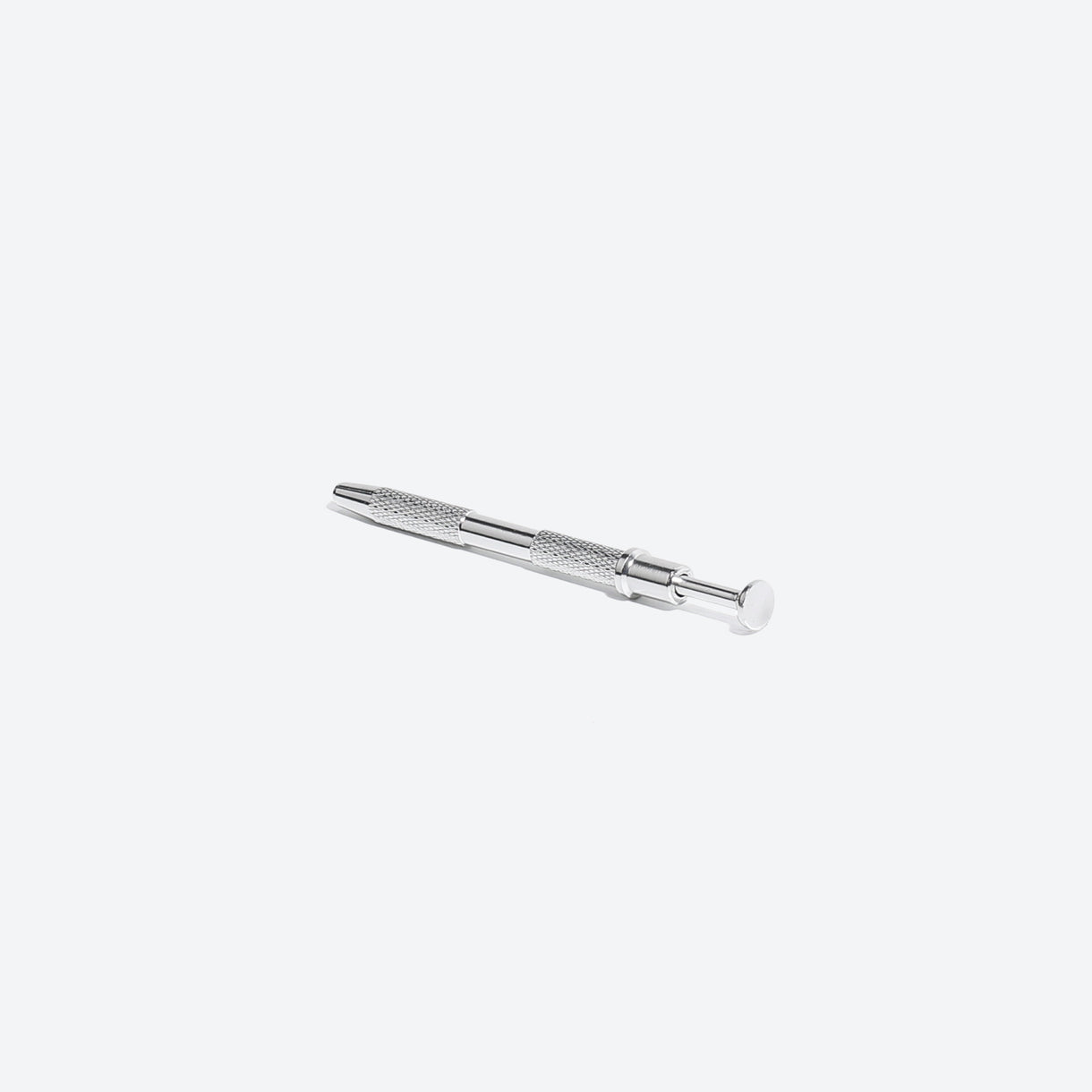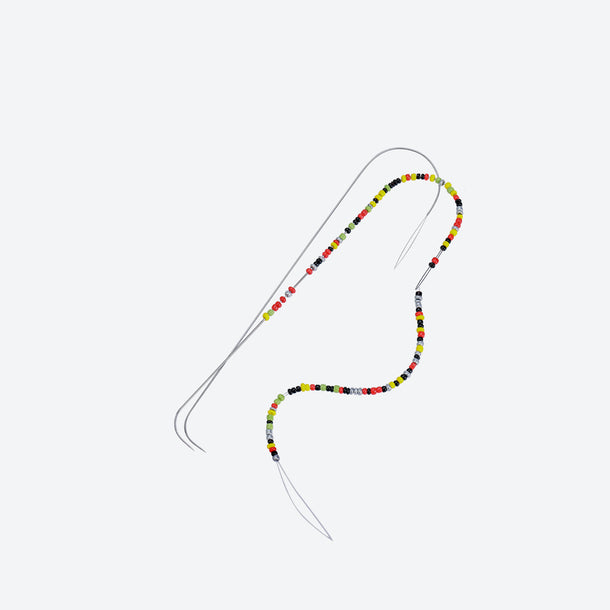If you’ve mastered basic perler bead projects and are ready for something more exciting, it’s time to try hard perler bead patterns.
These advanced designs push your creativity to the next level by blending precision, patience, and artistic detail. Intricate shading, complex layouts, and 3D structures make them both challenging and rewarding.
Whether you’re interested in creating lifelike portraits, video game characters, or massive wall art, this guide will walk you through everything from pattern ideas and techniques to advanced ironing tips that guarantee professional-looking results.
Quick Guide 💡:
- Hard perler bead patterns have more beads and involve complex designs and shading.
- They’re perfect for crafters ready to create advanced portraits or 3D art.
- Common examples include gaming icons, animals, and large landscapes.
- Careful ironing and layering are key to clean, flat designs.
- Using high-quality beads like Caydo’s collections helps with color accuracy and melting consistency.
You May Want to Shop Perler Beads
Key Features
- 200+ App Patterns: Access over 200 pre-loaded designs in the Caydo Art Design App, with new patterns added monthly. Create pixel art, charms, and décor in one click.
- Smart Color Guidance: The app generates numbered bead maps that match Caydo’s 36 colors, making crafting easy for kids and beginners. No design skills needed.
- Safe, Child-Friendly Materials: Made with CPC-certified, non-toxic beads that melt smoothly without fumes. Colors stay bright and durable, safe for ages 6 and up.
- Creative Gift for Kids: Encourages focus, patience, and fine motor skills. Comes in premium packaging, perfect for birthdays, holidays, classrooms, or family crafts.
- Complete 10,000pcs Starter Kit: Includes 36-color 5mm fuse beads with storage, mini iron, heat mat, 20 ironing papers, 2 pegboards, 10 hooks, 10 ropes, 2 tweezers, and user manual—everything ready to start.
What Makes a Perler Bead Pattern “Hard”?
A “hard” perler bead pattern isn’t just about the size. It involves precision in color placement, layering, shading, and ironing multiple panels seamlessly.
Here’s what makes these patterns challenging:
- High bead count — often 1,000 to 10,000 beads or more.
- Multiple shades for blending and realistic effects.
- 3D structures that must be carefully aligned.
- Multi-board setups requiring perfect pegboard connections.
- Patience for multi-hour crafting sessions.
These designs test every skill you’ve learned so far and teach valuable new ones like gradient shading and multi-piece assembly.
🧶 Also Read: How To Iron Perler Beads For Smooth And Creative Designs
Hard Perler Bead Pattern Categories
1. Detailed Character and Portrait Designs

Hard character or portrait designs are among the most popular advanced patterns because they require precision and creativity.
You’re working with subtle features, facial proportions, and emotion, which demand accurate shading and clean outlines.
Creative ideas to try:
- Pixel portraits of family, friends, or celebrities.
- Anime or cartoon heroes with intricate patterns.
- Detailed fantasy characters with armor or wings.
- Pets turned into lifelike bead designs.
Expert tip: To plan ahead, print a high-resolution reference photo and grid it out digitally. Use software or pixel art converters to translate it into bead layouts.
2. Large Multi-Board Landscape Builds

Large designs often take several boards joined together. These massive projects stand out as wall art or displays and offer experienced crafters an actual test of skill.
Project inspiration:
- Landscapes featuring mountains, forests, or oceans.
- Game worlds recreated in bead form.
- Night skies, galaxies, or city skylines.
- Movie or poster replicas.
Techniques that help:
- Label your boards to track piece placement before fusing.
- Fuse one section at a time and align edges carefully.
- Iron in consistent circular motions to maintain color separation.
Working slowly is crucial to preserve line quality and prevent distortion across connected panels.
3. 3D and Structural Perler Bead Art

3D perler bead builds take crafting to the next dimension. These designs combine multiple flat parts that connect or glue into a shape, creating realistic sculptures and models.
Examples of 3D projects:
- Dragons, unicorns, or dinosaurs.
- Cube robots and vehicles.
- Large Pokémon or Minecraft-style figures.
- Buildings and geometric sculptures.
Building process:
- Plan every face of your project, front and side.
- Create base panels, allow them to completely cool.
- Use hot air or glue to attach sections firmly.
- Use transparent supports for big structures.
3D builds are highly rewarding and display beautifully on stands or shelves.
4. Large Gaming or Pixel Art Patterns
Gaming designs are perfect for crafters who enjoy detail and nostalgia. These advanced patterns mimic old-school sprites but require more colors and complex layering to capture depth.
Popular gaming projects:
- Pixel scenes from Mario, Zelda, or Minecraft.
- Boss or creature sprites from classic games.
- Layered dioramas showing battles or landscapes.
- Game consoles and controllers in life-size bead form.
Pro tip: Stay consistent with color tones to avoid muddy blends. Caydo’s Minecraft Perler Beads Collection includes pre-matched colors that make this easier.
5. Realistic Animal and Nature Patterns

Realistic perler bead animals demand gradient shading and fine details. Each bead color affects how light or textured the appearance is, making this category great for artists.
Try these ideas:
- Wolf, tiger, or lion portraits with realistic fur patterns.
- Detailed butterflies with colored wings.
- Ocean life featuring coral reefs, jellyfish, or sea turtles.
- Birds with multi-layered coloring for wings and tails.
Expert shading tips:
- Outline in a dark color, then blend inward using lighter tones.
- Use partial transparency for highlights.
- Segment large images into smaller pieces for even melting.
6. Fantasy and Sci-Fi Creations
Advanced crafters love working with fantasy and sci‑fi because it combines creativity and technical design.
Ideas for fantasy lovers:
- Dragons, castles, and magic elements like wands or shields.
- Robots, spaceships, or futuristic city designs.
- Combination builds using glow-in-the-dark or neon beads.
Pro tip: Combine opaque and translucent beads to add dimension and realism. These pieces look amazing displayed under LED lights.
🧶 Also Read: Halloween Perler Bead Patterns For Spooky And Fun DIY Crafts
Techniques for Mastering Hard Perler Bead Art
Planning Color Palette
Hard designs rely on smooth color transitions. Use at least three shades per color: light, medium, and dark.
Color preparation checklist:
- Group beads by shade in containers for efficiency.
- Test gradient sections on scrap pegboards first.
- Keep a consistent shading direction to mimic lighting.
Advanced Ironing Strategy
Ironing larger projects takes steady heat control. Too much heat can warp designs; too little can cause beads to fall apart.
Expert tips for precise ironing:
- Set your iron to medium with no steam.
- Use parchment paper, not wax paper.
- Iron slowly in circular motions, covering small zones at a time.
- Let each section cool completely before handling.
- Place a flat object (like a heavy book) on top to prevent warping.
This step can take patience, but mastering it produces smooth, durable designs that retain shape.
Handling Multi-Board Projects
Large projects often use multiple boards. This is where misalignment commonly occurs, so careful handling is essential.
Best methods:
- Tape edges using painter’s tape before transporting to the ironing surface.
- Fuse one section at a time and reassemble afterward.
- Use reference photos to guide reattachment.
Keeping sections organized helps fuse seamlessly without visual breaks.
🧶 Also Read: Mini Cute Perler Bead Ideas For Fun And Easy Crafting
Common Problems and How to Solve Them
Working on hard perler bead patterns can involve minor setbacks, but every mistake teaches patience.
Common issues:
- Warped edges: Allow designs to cool under pressure and avoid overheating.
- Beads separating: Iron both sides evenly using even pressure.
- Color mix-ups: Sort and label colors before starting.
- Patterns shifting: Tape bead sections before ironing.
Troubleshooting early prevents rework later and keeps your finished art flawless.
Expert Tips for Leveling Up Your Skills
When moving from easy projects to hard perler bead patterns, work progressively.
Recommended approach:
- Start with moderate patterns using under 1,000 beads.
- Practice shading techniques on miniature portraits.
- Move to large single-board projects, then multi-board builds.
- Learn 3D assembly once you’re confident in handling large flat pieces.
Skill growth advice:
- Watch tutorials by professional crafters for color-blending lessons.
- Use a digital grid planner to refine large-scale layouts.
- Practice patience—advanced designs require time and steady focus.
Each project improves your speed and precision, preparing you for custom large-scale builds.
🧶 Also Read: Minecraft Perler Bead Patterns For Fun And Creative Crafting
Displaying and Preserving Hard Bead Designs
Advanced bead art deserves to be displayed properly. Presentation also extends the design’s life and prevents wear.
Display ideas:
- Frame portraits in deep shadow boxes.
- Mount large gaming murals behind acrylic sheets.
- Present 3D builds on resin-coated or wood display bases.
- Use LED lighting for glow-in-the-dark builds.
Care and maintenance:
- Keep designs away from direct sunlight.
- Wipe gently with microfiber cloths to remove dust.
- Store unused sections horizontally to avoid bending.
By treating your perler creations like real artwork, they’ll last for years without fading or breaking.
Advanced Tools and Bead Brands
Not all beads behave the same under heat. Using reliable brands ensures smoother fusing and accurate color results.
Recommended supplies:
- Cool Perler Beads: Excellent melting consistency and wide color range.
- Hama or Artkal Beads: Great for large, detailed gradients.
- Mini Perler Beads: Best for smaller patterns with more precise detail.
Tool upgrades for experts:
- Professional craft iron with temperature control.
- Large transparent pegboards for multi‑board builds.
- Storage drawers to keep colors sorted and accessible.
Using dependable materials shortens work time and delivers cleaner outcomes.
You May Want To Shop
Conclusion
Hard perler bead patterns are the ultimate craft challenge for anyone who loves detailed creativity.
They teach design planning, shading mastery, and precision handling while giving you striking finished pieces fit for display.
Whether you prefer realistic animals, video game scenes, or 3D builds, the satisfaction of completing a complex perler masterpiece is worth every minute spent.
Keep crafting, stay patient, and you’ll watch your hard perler bead designs transform into lasting works of art.
FAQs: Hard Perler Bead Patterns
How do I keep very large perler projects from warping?
Fuse in sections, flip and back-fuse, then press flat while warm under a heavy book. Work panel by panel to avoid overheating a single area. If a panel bows, re-warm the concave side and press again.
What is the best way to move big designs without shifting?
Use the taping method. Lay painter’s tape across the top, flip, remove the boards, and iron through parchment.
“Masking tape saved my huge sprite from falling apart when I flipped it,” is a common Reddit tip from large-scale builders.
Which beads are best for hard patterns and portraits?
Mini beads deliver the finest detail for portraits and tiny dithers. Standard beads are stronger for 3D and hinged builds. Many makers mix brands and keep a swatch board for shade matching.
How do I plan a photo-to-perler portrait?
Convert the image to pixels, limit the palette to 6–10 values per channel, and define the silhouette first. Place shadow shapes before highlights and refine features at the end. Test a small face crop before committing to full size.
How can I hide seams on multi-board mosaics?
Overlap borders by one row, align with registration marks, and dither across the seam. After joining, do a light edge refusion on the back. Mount to foam core to lock alignment.












